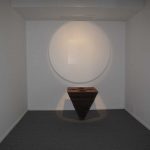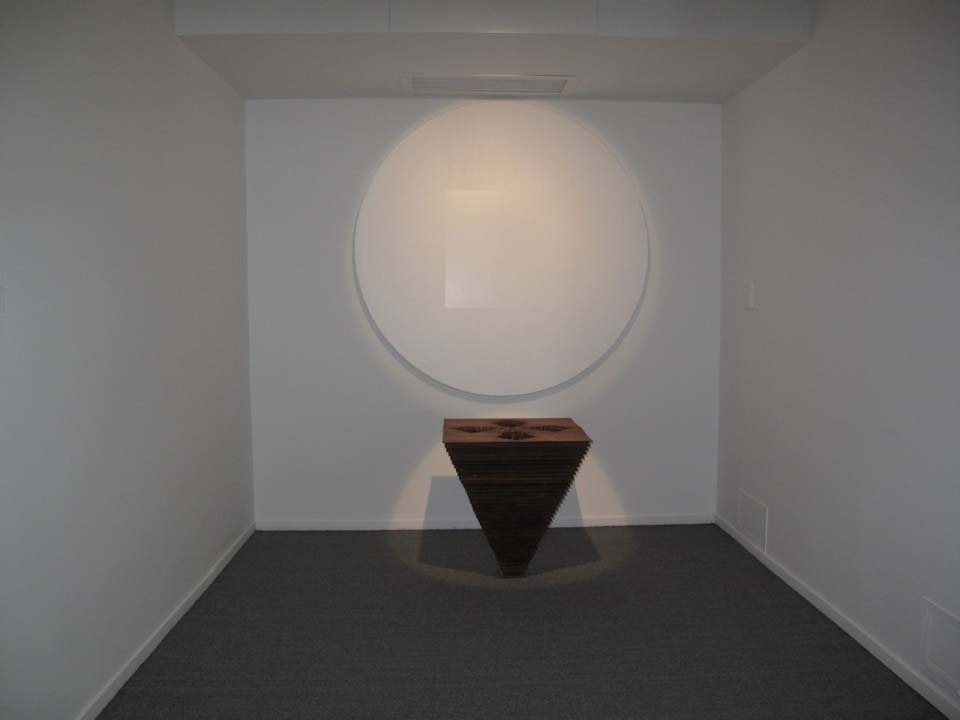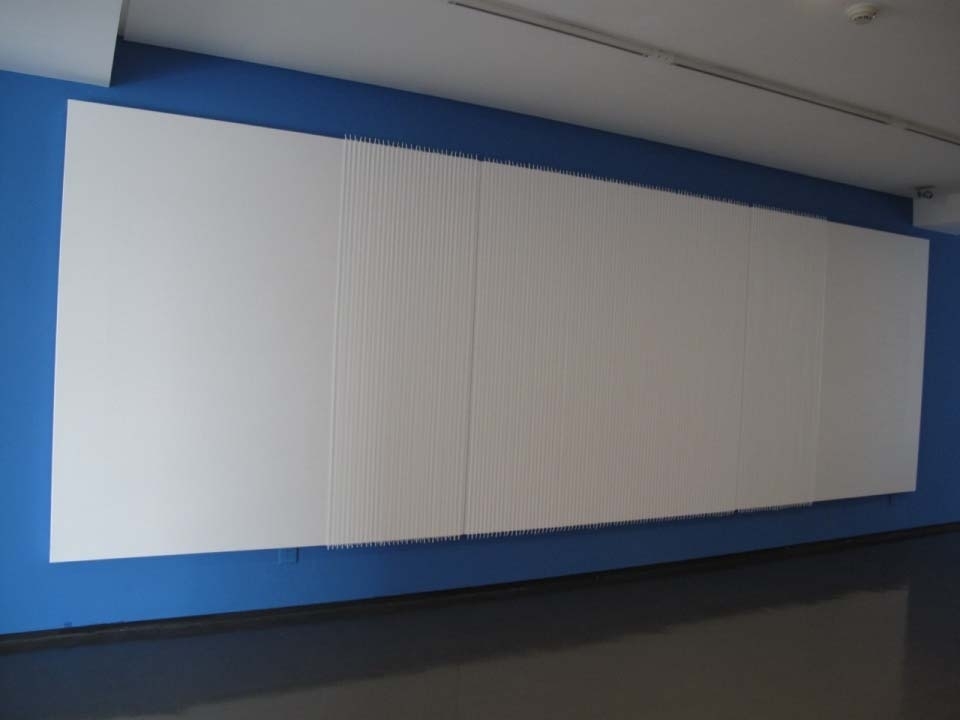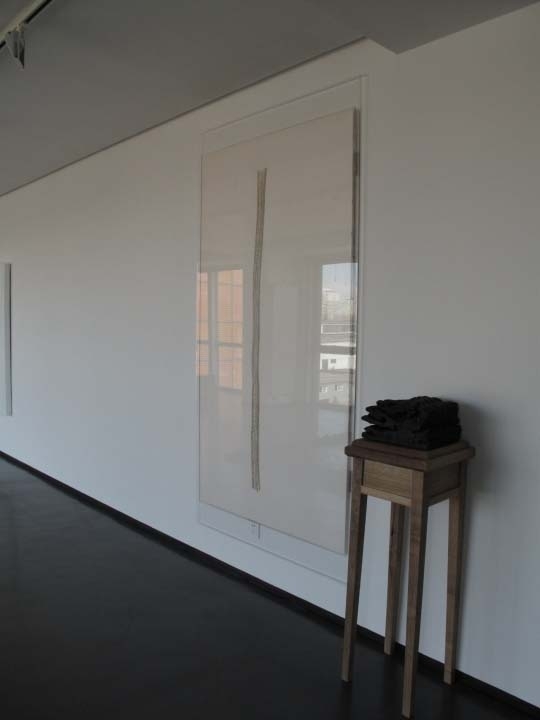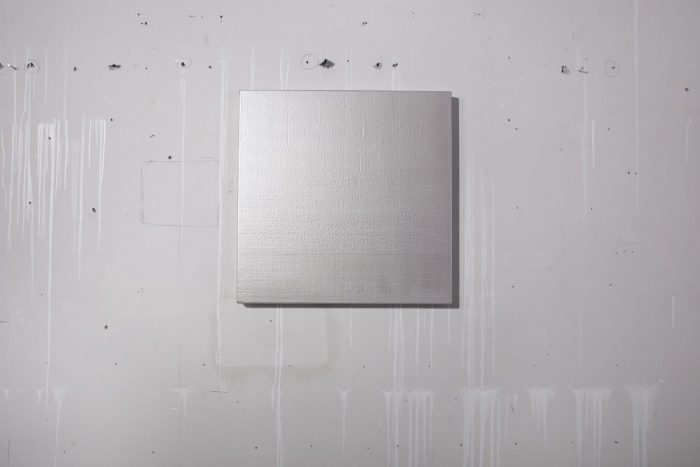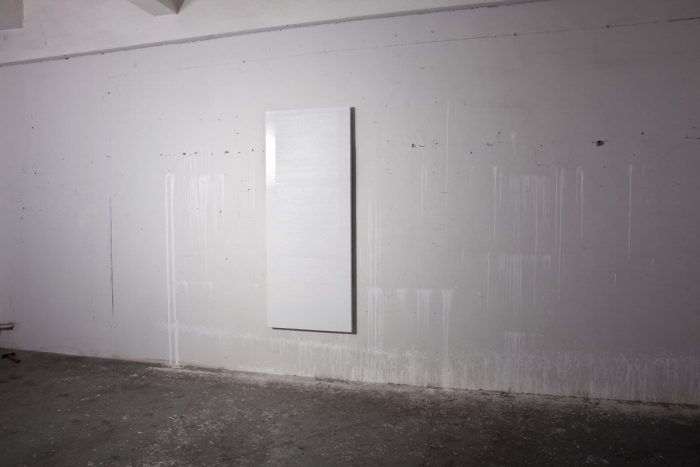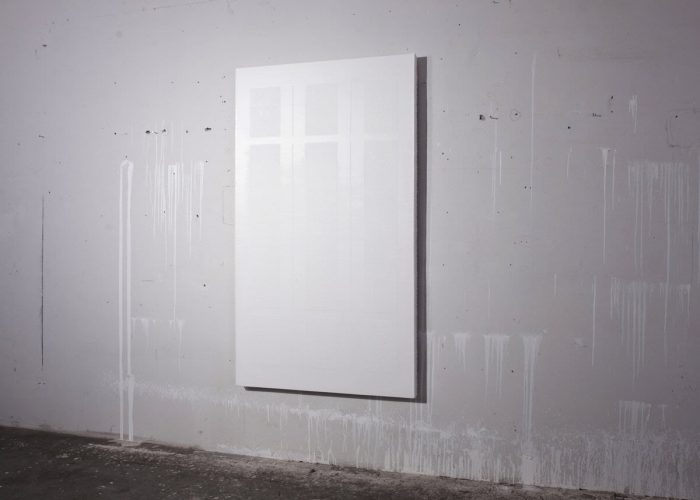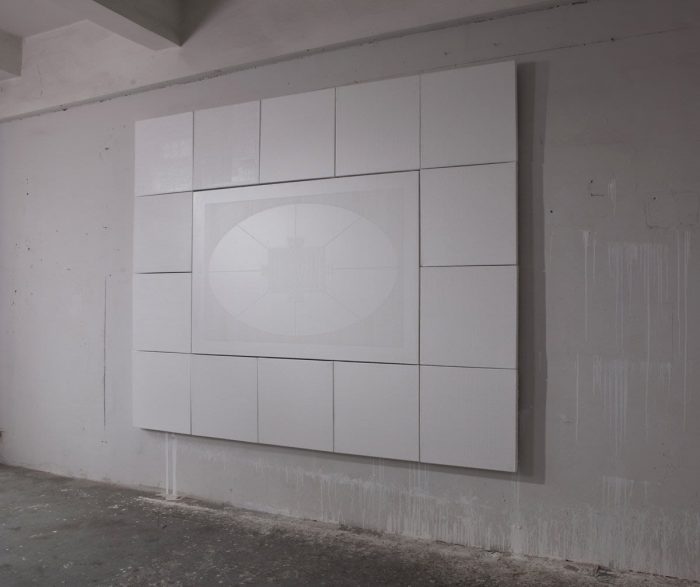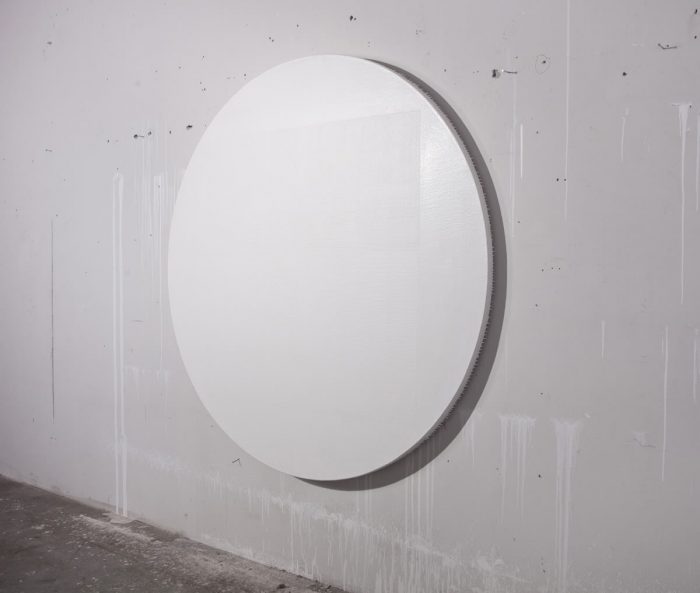The Folding Time
— CHEN Yufan’s experiment and generating
If without reading deeply and (at least slightly) asking, I think, few people can understand Chen Yufan’s works and their generating process relatively objectively. Such as his early works and , people usually either define them as abstract or form, or extend them to a possible concept. Until now, most explanations of his works are still wavering between the abstraction and concept.
Interestingly, in the communication with Chen Yufan, what he repeatedly stressed was: “My works are neither abstract, nor the concept.”
I believe that Chen Yu didn’t’ read Jonathan Crary, nor get in touch with the TJ Clark. He even doesn’t know what Jacques Rancière does. He firmly believes that, it does not matter for him that whether his works are abstract or concept or minimalism. What he cares is only the generating itself of the works and the experience they bring to him. However, this cognition is precisely coincident with the theories and ideas of Crary, Clark and Jacques Rancière. Crary constantly reaffirms that, it is just the concepts of “modernist” “modernity” and suchlike concepts and their definitions bind up and govern our cognition and understanding to the images and visual perception. In Clark’s opinion, even if the word “17th century” also has a problem. Besides them two, there are many structuralisms have been told us, through different texts, that behind any flat surface or forms there is a set of variable production systems and distribution mechanism. Jacques Rancière calls it as “regime” vividly. Clearly, on this point, there is already no difference among ancient, modern and contemporary. And the abstraction or concept which we usually called is no longer considered as a certain form or media, is no longer a certain strategy or idea.
Such a previous suppose makes us hard to define and . We cannot summarize his new works either. However, this doesn’t mean that it is unreadable, unsolvable or cannot be entered at all. The key is how to get inside the visual generating through personal experiment and the real experience, namely, by a “visual archaeological” point of view and path.
As always, Chen Yufan keeps his unique moderation and prudence. In his new works, although he continues the rational and order of his early works and , we can see that he tried to achieve a breakthrough on this basis. The introverted temperament and the expanding experiment are originally contrary to each other, but here, they become the artist’s start and entrance of rebuilding himself. In addition to wood, stone, coal and crystal, the acrylic on canvas or oil on canvas is the main language media this time. If what he emphasized much in and is the purity of media and self-sufficiency of forms, then, in his new works, the variety of media doesn’t affect the internal dialogue among the forms. In addition to the layout of dots, there are more orderly superposing lines. What they formed further constitute a block in its entirety. This seems as same as his approach in and . But we find that, in the works such as , the superposition of pure white (or pure black) dots or lines is just a part of the picture, the rest is blank. Then the picture presents a placement in picturesque disorder and the visual comparison. The texture and layers of different blocks form a kind of possible space, avoiding the rigid stratifying and collage. Apparently, the relationship between blocks weakens the possibility of turning into formalized “Polyphonic Painting” (Greenburg). Even if it cannot be avoided, it seems locate in the grey zone between images and forms. For example, in , the frames collage has such attempt of digesting formalism, so that even the sense of ritual of the work is seemingly “disassembled”.
The difference is, in and , we found the overall shape which is compose of dots and lines is always back to the certain image motif or visual basis which he supposed previously. On one hand, he extricates the images out by a certain form; on the other hand, the images he rebuilt develop new signification. The layout of dots seems to “break” the five-point star. But in fact, the block with deep texture which the dots form strengthens the purity and symbolic of the image basis, namely the five-point start itself. So does . The difference with is that, the purity in doesn’t refer to the formation of a certain (power or culture) symbol any more, but to reveal the homogenized reality of contemporary culture politics by purifications of forms and colors.
If and are still the two-dimensional, then, in , Chen Yufan tries to expand somewhat on the spatial dimension. However, he doesn’t give up the painting. He puts an installation in front of or next to the paintings. Or, he paints on the surface of a certain installation, such as , so that there is a meaningful dialogue relations formed between painting and installation. Although there is some contrast, obviously, he was thinking a lot. Why he choose wood and stone as his materials? And what does it mean after the wood’s stratifying and folding with traditional carving decoration? What we can be sure is that, the mixture of wood stone and canvas doesn’t affect the series of their respective forms. In , the dots and lines of the paintings will form a kind of interaction with the orderly stratified wood. The stratifying and folds are assigned in different media and forms, and connected. This kind of gathering with order and rules becomes a very simple but pure aesthetic form. Moreover, in addition to the necessary forms, the wood and stone themselves contain meanings. Chen Yufan told us that wood carving is just a visual motif which is full of family memories. And the solid texture of stone has become an interactive relation with the square symmetry of and its “monument” quality. is the same. The only difference is that the stones are replaced by coals. Its form is similar with seemingly, but the coals and natural crystals hanging from the top show out a kind of uncertainty and instability. The order of lines and the disorder strokes around the cube in lower half of the work form a relation of dislocation and corresponding. Moreover, the difference of color and surface texture from the coal and crystal bring out potentially somewhat sociological color. About the reason he calls it “Landscape”, Chen Yufan told me that, what he considered a lot is the inside relationship between the coal crystal and “landscape imagery” of the artwork. It may seem contrary to the former, but in fact no. Because the previous suppose of creation mostly are often rooted in the invisible daily experience. At least, it is certain that Chen Yufan’s understanding to “landscape” is no longer the traditional “poetry”.
Sometimes, he also tries some “tricks” to break such symmetry, such as the spilling paint and drops in . The protruding material in and the waving lines in all break the symmetry. But even so, he doesn’t want to “slope” and still tries a kind of balance and stability. For example, the “cross” in and the wood carving in , in a sense, have been given a function of checking balance. In any case, these “little tricks” and “little thoughts” made his works no longer have a strong sense of constriction.
In my opinion, when we only face to the pictures, the perception and interpretation perhaps can only arrive to this level. But for Chen Yufan, this is just a point of view to enter his vision. More importantly, it is also the start of narrative implied in forms and spatial composition.
In fact, it’s common to explain Chen Yufan’s works through the time. But the explanations in the past always are limited in the natural sense of time and ritual experience of creative process itself. Or they even can be expanded to a kind of “prapatti”. The process is no doubt important, but the variation and difference during the process are the visual representation of the time. We can not find out any difference apparently in <43200>, but little real difference means that it is not a pure form. Besides, this visual result is not based on the aesthetic need, but is intended to expand our cognation and understanding to vision itself. “43200” – the total number of dots in the picture would have a meaning of time. At least, it gives us some hints: time is a kind of volume. Such hint appears in Chen Yufan’s works repeatedly, including the sense of stratifying is also the representation of time superposition and compression. In addition, the more importance behind the spatial composition is the deeper level of time folds, namely the daily experience and the life-style.
The folds of time eventually become a plain, or an installation. Time is compressed or folded in a “thing”. Apparently the “thing” and its spaciousness are “detached” from time. But in fact, regardless of the form of hints, or the artistic practice itself, are both to give time some kind of inner depth and possible feelings of quantity. The pure forms are full of time rheology. What fold in this plain or installation is personal daily experience and the realization inside. For Chen Yufan, such realization is not only from his daily experience, but also from his lightly homesick. Or we even can academically classify it to a local cultural psychology and self-identity based on clan structure of the etiquette ethics. To Chen Yufan, who lives in Hangzhou for almost 10 years, the ceremonial tradition in his hometown Putian is always the link of maintaining the family. Now, the etiquette or clan ethics undoubtedly have left his daily life and memories. Perhaps it is just the reason why he missed it. And it also becomes his inner motive of his experiment and creation. Here, the daily experience does not refuse to metaphysics, but internalize the metaphysics into the daily practice; here, metaphysics is not on the top of the pure form, but the folds of time internalized in vision.
Therefore, we might regard it as the continuation of . But what is different is that Chen Yufan compress it into the most thorough and purest state as possible as he can, so that we can hardly imagine how rich feelings and thoughts behind it. All the rituals and life experience of time are compressed in a pure form. This is the expansion and expatiation of life rather than the folding and compression of time. In these “things” and forms, the possibilities occurring in the past, present and future are connected together. Memory, attention, and aspiration are all “stagnant” in the “things” and forms, and resort to folding and unfolding by visual way.
Just in such natural narrative, there is a unique angle of view and visual mechanisms produced. It is not abstract, nor is the concept. It is a fold, an expansion and an experience. Like what Gilles Deleuze said, “Writing is a generating event, will never end, always in the process, beyond any content which possible experience or has experienced. This is a process, that is, a life fragments crossing the future and the past.” So does Chen Yu. His experiment is not only the process but also the generating.


